So you learned the base id, class, and descendant selectors—and then called it a day? If so, you're missing out on an enormous level of flexibility. While many of the selectors mentioned in this article are part of the CSS3 spec, and are, consequently, only available in modern browsers, you owe it to yourself to commit these to memory.
And by the way, if you're having trouble with your CSS and want a pro to look over it and fix any errors, you can find some qualified freelancers on Envato Studio.
1. *
* {
margin: 0;
padding: 0;
}
Let's knock the obvious ones out, for the beginners, before we move onto the more advanced selectors.
The star symbol will target every single element on the page. Many developers will use this trick to zero out the margins and padding. While this is certainly fine for quick tests, I'd advise you to never use this in production code. It adds too much weight on the browser, and is unnecessary.
The * can also be used with child selectors.
#container * {
border: 1px solid black;
}
This will target every single element that is a child of the #container div. Again, try not to use this technique very much, if ever.
Compatibility
- IE6+
- Firefox
- Chrome
- Safari
- Opera
2. #X
#container {
width: 960px;
margin: auto;
}
Prefixing the hash symbol to a selector allows us to target by id. This is easily the most common usage, however be cautious when using id selectors.
Ask yourself: do I absolutely need to apply an
idto this element in order to target it?
id selectors are rigid and don't allow for reuse. If possible, first try to use a tag name, one of the new HTML5 elements, or even a pseudo-class.
Compatibility
- IE6+
- Firefox
- Chrome
- Safari
- Opera
3. .X
.error {
color: red;
}
This is a class selector. The difference between ids and classes is that, with the latter, you can target multiple elements. Use classes when you want your styling to apply to a group of elements. Alternatively, use ids to find a needle-in-a-haystack, and style only that specific element.
Compatibility
- IE6+
- Firefox
- Chrome
- Safari
- Opera
4. X Y
li a {
text-decoration: none;
}
The next most comment selector is the descendant selector. When you need to be more specific with your selectors, you use these. For example, what if, rather than targeting all anchor tags, you only need to target the anchors which are within an unordered list? This is specifically when you'd use a descendant selector.
Pro-tip - If your selector looks like
X Y Z A B.error, you're doing it wrong. Always ask yourself if it's absolutely necessary to apply all of that weight.
Compatibility
- IE6+
- Firefox
- Chrome
- Safari
- Opera
5. X
a { color: red; }
ul { margin-left: 0; }
What if you want to target all elements on a page, according to their type, rather than an id or classname? Keep it simple, and use a type selector. If you need to target all unordered lists, use ul {}.
Compatibility
- IE6+
- Firefox
- Chrome
- Safari
- Opera
6. X:visited and X:link
a:link { color: red; }
a:visted { color: purple; }
We use the :link pseudo-class to target all anchors tags which have yet to be clicked on.
Alternatively, we also have the :visited pseudo class, which, as you'd expected, allows us to apply specific styling to only the anchor tags on the page which have been clicked on, or visited.
Compatibility
- IE7+
- Firefox
- Chrome
- Safari
- Opera
7. X + Y
ul + p {
color: red;
}
This is referred to as an adjacent selector. It will select only the element that is immediately preceded by the former element. In this case, only the first paragraph after each ul will have red text.
Compatibility
- IE7+
- Firefox
- Chrome
- Safari
- Opera
8. X > Y
div#container > ul {
border: 1px solid black;
}
The difference between the standard X Y and X > Y is that the latter will only select direct children. For example, consider the following markup.
<div id="container">
<ul>
<li> List Item
<ul>
<li> Child </li>
</ul>
</li>
<li> List Item </li>
<li> List Item </li>
<li> List Item </li>
</ul>
</div>
A selector of #container > ul will only target the uls which are direct children of the div with an id of container. It will not target, for instance, the ul that is a child of the first li.
For this reason, there are performance benefits in using the child combinator. In fact, it's recommended particularly when working with JavaScript-based CSS selector engines.
Compatibility
- IE7+
- Firefox
- Chrome
- Safari
- Opera
9. X ~ Y
ul ~ p {
color: red;
}
This sibling combinator is similar to X + Y, however, it's less strict. While an adjacent selector (ul + p) will only select the first element that is immediately preceded by the former selector, this one is more generalized. It will select, referring to our example above, any p elements, as long as they follow a ul.
Compatibility
- IE7+
- Firefox
- Chrome
- Safari
- Opera
10. X[title]
a[title] {
color: green;
}
Referred to as an attributes selector, in our example above, this will only select the anchor tags that have a title attribute. Anchor tags which do not will not receive this particular styling. But, what if you need to be more specific? Well...
Compatibility
- IE7+
- Firefox
- Chrome
- Safari
- Opera
11. X[href="foo"]
a[href="http://net.tutsplus.com"] {
color: #1f6053; /* nettuts green */
}
The snippet above will style all anchor tags which link to http://net.tutsplus.com; they'll receive our branded green color. All other anchor tags will remain unaffected.
Note that we're wrapping the value in quotes. Remember to also do this when using a JavaScript CSS selector engine. When possible, always use CSS3 selectors over unofficial methods.
This works well, though, it's a bit rigid. What if the link does indeed direct to Nettuts+, but, maybe, the path is nettuts.com rather than the full url? In those cases we can use a bit of the regular expressions syntax.
Compatibility
- IE7+
- Firefox
- Chrome
- Safari
- Opera
12. X[href*="nettuts"]
a[href*="tuts"] {
color: #1f6053; /* nettuts green */
}
There we go; that's what we need. The star designates that the proceeding value must appear somewhere in the attribute's value. That way, this covers nettuts.com, net.tutsplus.com, and even tutsplus.com.
Keep in mind that this is a broad statement. What if the anchor tag linked to some non-Envato site with the string tuts in the url? When you need to be more specific, use ^ and $, to reference the beginning and end of a string, respectively.
Compatibility
- IE7+
- Firefox
- Chrome
- Safari
- Opera
13. X[href^="http"]
a[href^="http"] {
background: url(path/to/external/icon.png) no-repeat;
padding-left: 10px;
}
Ever wonder how some websites are able to display a little icon next to the links which are external? I'm sure you've seen these before; they're nice reminders that the link will direct you to an entirely different website.
This is a cinch with the carat symbol. It's most commonly used in regular expressions to designate the beginning of a string. If we want to target all anchor tags that have a href which begins with http, we could use a selector similar to the snippet shown above.
Notice that we're not searching for
http://; that's unnecessary, and doesn't account for the urls that begin withhttps://.
Now, what if we wanted to instead style all anchors which link to, say, a photo? In those cases, let's search for the end of the string.
Compatibility
- IE7+
- Firefox
- Chrome
- Safari
- Opera
14. X[href$=".jpg"]
a[href$=".jpg"] {
color: red;
}
Again, we use a regular expressions symbol, $, to refer to the end of a string. In this case, we're searching for all anchors which link to an image -- or at least a url that ends with .jpg. Keep in mind that this certainly won't work for gifs and pngs.
Compatibility
- IE7+
- Firefox
- Chrome
- Safari
- Opera
15. X[data-*="foo"]
a[data-filetype="image"] {
color: red;
}
Refer back to number eight; how do we compensate for all of the various image types: png, jpeg,jpg, gif? Well, we could create multiple selectors, such as:
a[href$=".jpg"],
a[href$=".jpeg"],
a[href$=".png"],
a[href$=".gif"] {
color: red;
}
But, that's a pain in the butt, and is inefficient. Another possible solution is to use custom attributes. What if we added our own data-filetype attribute to each anchor that links to an image?
<a href="path/to/image.jpg" data-filetype="image"> Image Link </a>
Then, with that hook in place, we can use a standard attributes selector to target only those anchors.
a[data-filetype="image"] {
color: red;
}
Compatibility
- IE7+
- Firefox
- Chrome
- Safari
- Opera
16. X[foo~="bar"]
a[data-info~="external"] {
color: red;
}
a[data-info~="image"] {
border: 1px solid black;
}
Here's a special one that'll impress your friends. Not too many people know about this trick. The tilda (~) symbol allows us to target an attribute which has a spaced-separated list of values.
Going along with our custom attribute from number fifteen, above, we could create a data-info attribute, which can receive a space-separated list of anything we need to make note of. In this case, we'll make note of external links and links to images -- just for the example.
"<a href="path/to/image.jpg" data-info="external image"> Click Me, Fool </a>
With that markup in place, now we can target any tags that have either of those values, by using the ~ attributes selector trick.
/* Target data-info attr that contains the value "external" */
a[data-info~="external"] {
color: red;
}
/* And which contain the value "image" */
a[data-info~="image"] {
border: 1px solid black;
}
Pretty nifty, ay?
Compatibility
- IE7+
- Firefox
- Chrome
- Safari
- Opera
17. X:checked
input[type=radio]:checked {
border: 1px solid black;
}
This pseudo class will only target a user interface element that has been checked - like a radio button, or checkbox. It's as simple as that.
Compatibility
- IE9+
- Firefox
- Chrome
- Safari
- Opera
18. X:after
The before and after pseudo classes kick butt. Every day, it seems, people are finding new and creative ways to use them effectively. They simply generate content around the selected element.
Many were first introduced to these classes when they encountered the clear-fix hack.
.clearfix:after {
content: "";
display: block;
clear: both;
visibility: hidden;
font-size: 0;
height: 0;
}
.clearfix {
*display: inline-block;
_height: 1%;
}
This hack uses the :after pseudo class to append a space after the element, and then clear it. It's an excellent trick to have in your tool bag, particularly in the cases when the overflow: hidden; method isn't possible.
For another creative use of this, refer to my quick tip on creating shadows.
According to the CSS3 Selectors specification, you should technically use the pseudo element syntax of two colons
::. However, to remain compatible, the user-agent will accept a single colon usage as well. In fact, at this point, it's smarter to use the single-colon version in your projects.
Compatibility
- IE8+
- Firefox
- Chrome
- Safari
- Opera
19. X:hover
div:hover {
background: #e3e3e3;
}
Oh come on. You know this one. The official term for this is user action pseudo class. It sounds confusing, but it really isn't. Want to apply specific styling when a user hovers over an element? This will get the job done!
Keep in mind that older version of Internet Explorer don't respond when the
:hoverpseudo class is applied to anything other than an anchor tag.
You'll most often use this selector when applying, for example, a border-bottom to anchor tags, when hovered over.
a:hover {
border-bottom: 1px solid black;
}
Pro-tip -
border-bottom: 1px solid black;looks better thantext-decoration: underline;.
Compatibility
- IE6+ (In IE6, :hover must be applied to an anchor element)
- Firefox
- Chrome
- Safari
- Opera
20. X:not(selector)
div:not(#container) {
color: blue;
}
The negation pseudo class is particularly helpful. Let's say I want to select all divs, except for the one which has an id of container. The snippet above will handle that task perfectly.
Or, if I wanted to select every single element (not advised) except for paragraph tags, we could do:
*:not(p) {
color: green;
}
Compatibility
- IE9+
- Firefox
- Chrome
- Safari
- Opera
21. X::pseudoElement
p::first-line {
font-weight: bold;
font-size: 1.2em;
}
We can use pseudo elements (designated by ::) to style fragments of an element, such as the first line, or the first letter. Keep in mind that these must be applied to block level elements in order to take effect.
A pseudo-element is composed of two colons:
::
Target the First Letter of a Paragraph
p::first-letter {
float: left;
font-size: 2em;
font-weight: bold;
font-family: cursive;
padding-right: 2px;
}
This snippet is an abstraction that will find all paragraphs on the page, and then sub-target only the first letter of that element.
This is most often used to create newspaper-like styling for the first-letter of an article.
Target the First Line of a Paragraph
p::first-line {
font-weight: bold;
font-size: 1.2em;
}
Similarly, the ::first-line pseudo element will, as expected, style the first line of the element only.
"For compatibility with existing style sheets, user agents must also accept the previous one-colon notation for pseudo-elements introduced in CSS levels 1 and 2 (namely, :first-line, :first-letter, :before and :after). This compatibility is not allowed for the new pseudo-elements introduced in this specification." - Source
Compatibility
- IE6+
- Firefox
- Chrome
- Safari
- Opera
22. X:nth-child(n)
li:nth-child(3) {
color: red;
}
Remember the days when we had no way to target specific elements in a stack? The nth-child pseudo class solves that!
Please note that nth-child accepts an integer as a parameter, however, this is not zero-based. If you wish to target the second list item, use li:nth-child(2).
We can even use this to select a variable set of children. For example, we could do li:nth-child(4n) to select every fourth list item.
Compatibility
- IE9+
- Firefox 3.5+
- Chrome
- Safari
23. X:nth-last-child(n)
li:nth-last-child(2) {
color: red;
}
What if you had a huge list of items in a ul, and only needed to access, say, the third to the last item? Rather than doing li:nth-child(397), you could instead use the nth-last-child pseudo class.
This technique works almost identically from number sixteen above, however, the difference is that it begins at the end of the collection, and works its way back.
Compatibility
- IE9+
- Firefox 3.5+
- Chrome
- Safari
- Opera
24. X:nth-of-type(n)
ul:nth-of-type(3) {
border: 1px solid black;
}
There will be times when, rather than selecting a child, you instead need to select according to the type of element.
Imagine mark-up that contains five unordered lists. If you wanted to style only the third ul, and didn't have a unique id to hook into, you could use the nth-of-type(n) pseudo class. In the snippet above, only the third ul will have a border around it.
Compatibility
- IE9+
- Firefox 3.5+
- Chrome
- Safari
25. X:nth-last-of-type(n)
ul:nth-last-of-type(3) {
border: 1px solid black;
}
And yes, to remain consistent, we can also use nth-last-of-type to begin at the end of the selectors list, and work our way back to target the desired element.
Compatibility
- IE9+
- Firefox 3.5+
- Chrome
- Safari
- Opera
26. X:first-child
ul li:first-child {
border-top: none;
}
This structural pseudo class allows us to target only the first child of the element's parent. You'll often use this to remove borders from the first and last list items.
For example, let's say you have a list of rows, and each one has a border-top and a border-bottom. Well, with that arrangement, the first and last item in that set will look a bit odd.
Many designers apply classes of first and last to compensate for this. Instead, you can use these pseudo classes.
Compatibility
- IE7+
- Firefox
- Chrome
- Safari
- Opera
27. X:last-child
ul > li:last-child {
color: green;
}
The opposite of first-child, last-child will target the last item of the element's parent.
Example
Let's build a simple example to demonstrate one possible use of these classes. We'll create a styled list item.
Markup
<ul>
<li> List Item </li>
<li> List Item </li>
<li> List Item </li>
</ul>
Nothing special here; just a simple list.
CSS
ul {
width: 200px;
background: #292929;
color: white;
list-style: none;
padding-left: 0;
}
li {
padding: 10px;
border-bottom: 1px solid black;
border-top: 1px solid #3c3c3c;
}
This styling will set a background, remove the browser-default padding on the ul, and apply borders to each li to provide a bit of depth.
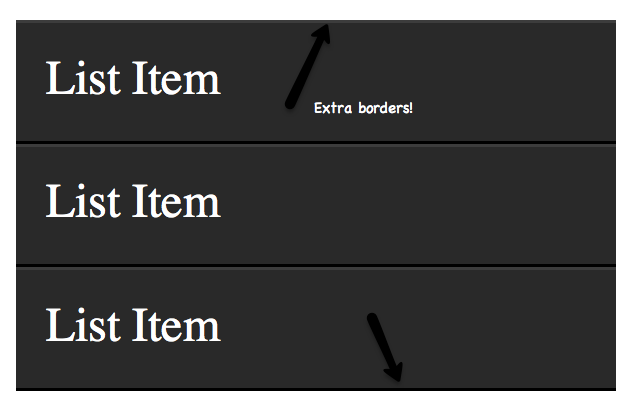
To add depth to your lists, apply a
border-bottomto eachlithat is a shade or two darker than theli's background color. Next, apply aborder-topwhich is a couple shades lighter.
The only problem, as shown in the image above, is that a border will be applied to the very top and bottom of the unordered list - which looks odd. Let's use the :first-child and :last-child pseudo classes to fix this.
li:first-child {
border-top: none;
}
li:last-child {
border-bottom: none;
}

There we go; that fixes it!
Compatibility
- IE9+
- Firefox
- Chrome
- Safari
- Opera
Yep - IE8 supported :first-child, but not :last-child. Go figure.
28. X:only-child
div p:only-child {
color: red;
}
Truthfully, you probably won't find yourself using the only-child pseudo class too often. Nonetheless, it's available, should you need it.
It allows you to target elements which are the only child of its parent. For example, referencing the snippet above, only the paragraph that is the only child of the div will be colored, red.
Let's assume the following markup.
<div><p> My paragraph here. </p></div> <div> <p> Two paragraphs total. </p> <p> Two paragraphs total. </p> </div>
In this case, the second div's paragraphs will not be targeted; only the first div. As soon as you apply more than one child to an element, the only-child pseudo class ceases to take effect.
Compatibility
- IE9+
- Firefox
- Chrome
- Safari
- Opera
29. X:only-of-type
li:only-of-type {
font-weight: bold;
}
This structural pseudo class can be used in some clever ways. It will target elements that do not have any siblings within its parent container. As an example, let's target all uls, which have only a single list item.
First, ask yourself how you would accomplish this task? You could do ul li, but, this would target all list items. The only solution is to use only-of-type.
ul > li:only-of-type {
font-weight: bold;
}
Compatibility
- IE9+
- Firefox 3.5+
- Chrome
- Safari
- Opera
30. X:first-of-type
The first-of-type pseudo class allows you to select the first siblings of its type.
A Test
To better understand this, let's have a test. Copy the following mark-up into your code editor:
<div>
<p> My paragraph here. </p>
<ul>
<li> List Item 1 </li>
<li> List Item 2 </li>
</ul>
<ul>
<li> List Item 3 </li>
<li> List Item 4 </li>
</ul>
</div>
Now, without reading further, try to figure out how to target only "List Item 2". When you've figured it out (or given up), read on.
Solution 1
There are a variety of ways to solve this test. We'll review a handful of them. Let's begin by using first-of-type.
ul:first-of-type > li:nth-child(2) {
font-weight: bold;
}
This snippet essentially says, "find the first unordered list on the page, then find only the immediate children, which are list items. Next, filter that down to only the second list item in that set.
Solution 2
Another option is to use the adjacent selector.
p + ul li:last-child {
font-weight: bold;
}
In this scenario, we find the ul that immediately proceeds the p tag, and then find the very last child of the element.
Solution 3
We can be as obnoxious or as playful as we want with these selectors.
ul:first-of-type li:nth-last-child(1) {
font-weight: bold;
}
This time, we grab the first ul on the page, and then find the very first list item, but starting from the bottom! :)
Compatibility
- IE9+
- Firefox 3.5+
- Chrome
- Safari
- Opera
Conclusion
If you're compensating for older browsers, like Internet Explorer 6, you still need to be careful when using these newer selectors. But, please don't let that deter you from learning these. You'd be doing a huge disservice to yourself. Be sure to refer here for a browser-compatibility list. Alternatively, you can use Dean Edward's excellent IE9.js script to bring support for these selectors to older browsers.
Secondly, when working with JavaScript libraries, like the popular jQuery, always try to use these native CSS3 selectors over the library's custom methods/selectors, when possible. It'll make your code faster, as the selector engine can use the browser's native parsing, rather than its own.
It’s great that you’re spending time learning web design fundamentals, but if you need a quick solution, one of our ready-to-use CSS templates might be a good option. We also have a few premium CSS items for you to consider:
Premium CSS Items
Here are a handful of the ready-to-use CSS code items on Envato Market that you might find useful.
1. CSS3 Mega Drop Down Menu
This Mega Drop Down Menu is a flexible and easy to integrate solution to build your custom menus. The drop down relies only on CSS/XHTML and comes with a fully working contact form.
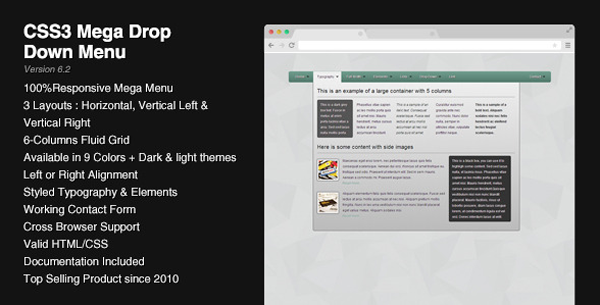
2. CSS3 Responsive Web Pricing Tables Grids
CSS3 Responsive Web Pricing Tables Grids is a pack of pure CSS3, responsive and retina ready Pricing Tables. The template comes with 2 table styles, 20 predefined color skins, animated hover states, possibility to set one or many columns as active (popped-up) by default, CSS3 ribbons, CSS3 tooltips, 20 font based yes/no icons.
This version is dedicated for any custom CMS based site as well as for non-CMS site and will work with straight HTML or PHP-based websites.
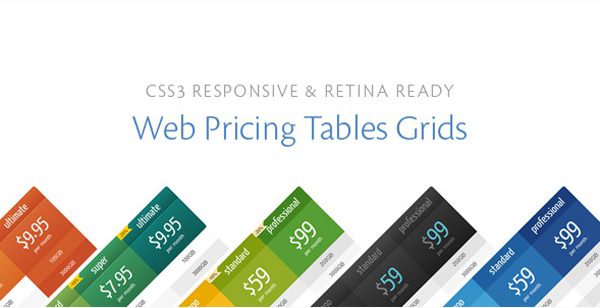
3. The Tooltip
The Tooltip is a handsome, modern gentleman that appears when it’s showtime. Its features include:
- 6 positions
- 12 color schemes
- gracefully degrades in older browsers
- LESS file included so you can create a custom color scheme, generate a compact production version of The Tooltip (less code), and mix it in your LESS stylesheet
- featured on 1stewebdesigner.com and tripwire magazine
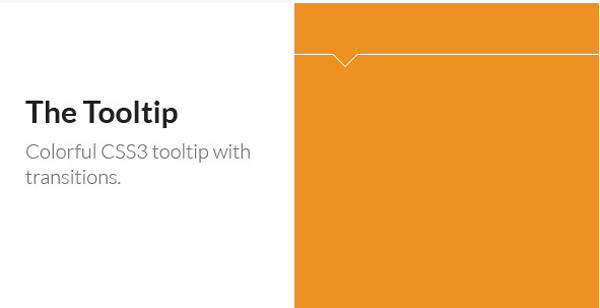
4. MegaNavbar (v 2.2.0). Advanced Mega Menu for Bootstrap 3.0+
MegaNavbar is a pure HTML5/CSS3 navigation component that uses the standard navbar markup and the fluid grid system classes from Bootstrap 3. It works for fixed and responsive layouts, and has the facility to include other Bootstrap components. MegaNavbar is compatible with mobile devices and modern web browsers.
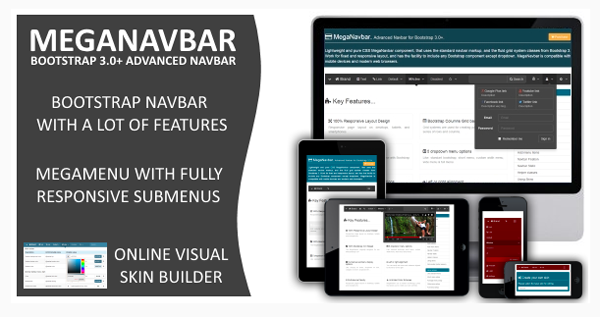
5. Responsive CSS3 Pricing Tables
This pack of CSS3 Pricing Tables is a complete solution for building awesome tables in minutes. It comes with 6 color variants as well as 2 table variants (light or dark).
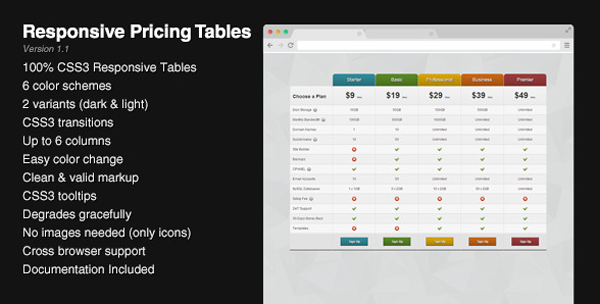


Comments